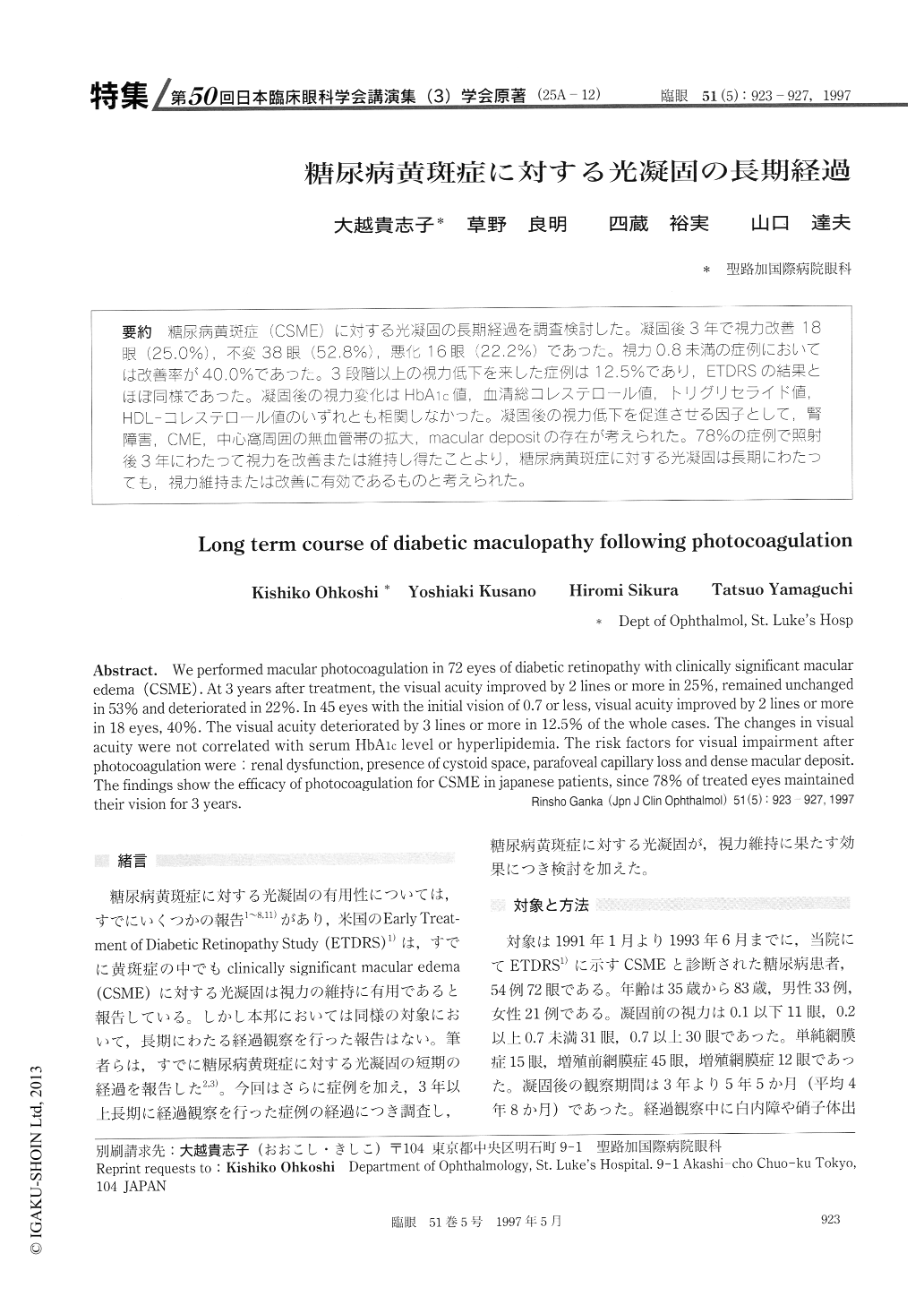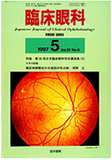Japanese
English
- 有料閲覧
- Abstract 文献概要
- 1ページ目 Look Inside
(25A-12) 糖尿病黄斑症(CSME)に対する光凝固の長期経過を調査検討した。凝固後3年で視力改善18眼(25.0%),不変38眼(52.8%),悪化16眼(22.2%)であった。視力0.8未満の症例においては改善率が40.0%であった。3段階以上の視力低下を来した症例は12.5%であり,ETDRSの結果とほぼ同様であった。凝固後の視力変化はHbA1c値,血清総コレステロール値,トリグリセライド値,HDL-コレステロール値のいずれとも相関しなかった。凝固後の視力低下を促進させる因子として,腎障害,CME,中心窩周囲の無血管帯の拡大,macular depositの存在が考えられた。78%の症例で照射後3年にわたって視力を改善または維持し得たことより,糖尿病黄斑症に対でずる光凝固は長期にわたっても,視力維持または改善に有効であるものと考えられた。
We performed macular photocoagulation in 72 eyes of diabetic retinopathy with clinically significant macular edema (CSME). At 3 years after treatment, the visual acuity improved by 2 lines or more in 25%, remained unchanged in 53% and deteriorated in 22%. In 45 eyes with the initial vision of 0.7 or less, visual acuity improved by 2 lines or more in 18 eyes, 40%. The visual acuity deteriorated by 3 lines or more in 12.5% of the whole cases. The changes in visual acuity were not correlated with serum HbA1c level or hyperlipidemia. The risk factors for visual impairment after photocoagulation were : renal dysfunction, presence of cystoid space, parafoveal capillary loss and dense macular deposit. The findings show the efficacy of photocoagulation for CSME in japanese patients, since 78% of treated eyes maintained their vision for 3 years.

Copyright © 1997, Igaku-Shoin Ltd. All rights reserved.


